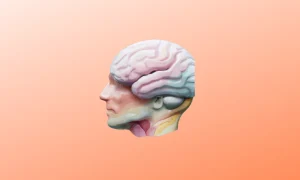Introduction
Catatonic schizophrenia is a rare and severe subtype of schizophrenia, marked by extreme disturbances in motor behavior, ranging from physical immobility to excessive motor activity. Understanding catatonic schizophrenia causes is crucial for raising awareness and promoting early intervention. While the exact causes are not fully understood, research highlights several contributing factors. In this blog, we explore five key causes of catatonic schizophrenia and provide insights into its complexity.
1. Genetic Predisposition as a Cause of Catatonic Schizophrenia
One of the most significant contributors to catatonic schizophrenia causes is genetic predisposition. Individuals with a family history of schizophrenia or related mental health disorders are at a higher risk of developing the condition. Studies have identified specific genetic markers linked to schizophrenia, suggesting a hereditary component. However, having a genetic predisposition does not guarantee that an individual will develop the disorder; environmental factors often play a role as well.

For Consultant with the Best Psychiatrist in Delhi for the Best OCD Treatment in Delhi, consider visiting:
2. Brain Structure Abnormalities as Catatonic Schizophrenia Causes
Research has shown that abnormalities in brain structure and function may contribute to catatonic schizophrenia causes. These abnormalities often involve changes in the prefrontal cortex, hippocampus, and thalamus. Neuroimaging studies indicate that individuals with schizophrenia may have a reduced volume of grey matter and abnormal neural connections, leading to impaired communication between different brain regions.
These structural differences can affect critical cognitive functions, motor control, and emotional regulation, contributing to the symptoms of catatonia observed in this subtype of schizophrenia.
3. Environmental Stressors as Catatonic Schizophrenia Causes
Environmental stressors, particularly during critical periods of brain development, are known to increase the risk of schizophrenia. Examples include prenatal exposure to infections, malnutrition, or complications during childbirth. Adverse childhood experiences, such as trauma, abuse, or neglect, also play a significant role.
The interplay between these environmental factors and genetic predisposition can trigger the onset of schizophrenia, including its catatonic subtype. Understanding and mitigating these stressors is essential for prevention strategies.
Read about environmental risk factors for schizophrenia from the Centers for Disease Control and Prevention (CDC).

4. Neurochemical Imbalances
Neurochemical imbalances in the brain, particularly involving dopamine and glutamate, are strongly associated with catatonic schizophrenia causes. Dopamine dysregulation, for example, is linked to various symptoms of the disorder, including motor disturbances seen in catatonia.
Disruptions in neurotransmitter systems can impact how the brain processes information, leading to confusion, disorganized thinking, and abnormal behaviors. While this area of research is still evolving, neurochemical imbalances remain a central focus in understanding schizophrenia’s underlying mechanisms.
5. Psychological and Social Factors
Psychological and social factors, including chronic stress, isolation, and a lack of social support, can exacerbate the risk of developing catatonic schizophrenia. High levels of stress can trigger psychotic episodes in vulnerable individuals, further complicating the condition.
Additionally, a stressful home or work environment can act as a catalyst, worsening symptoms and contributing to the progression of the disorder. Supportive networks and early psychological interventions are critical in managing and reducing the impact of these factors.
Explore stress management tips from the World Health Organization (WHO).

Conclusion
Understanding catatonic schizophrenia causes is essential for fostering awareness and reducing the stigma surrounding this complex mental health condition. Genetic predisposition, brain structure abnormalities, environmental stressors, neurochemical imbalances, and psychological and social factors all play a role in its development.
By delving into these causes, we can better identify those at risk and work towards early intervention and effective support systems. For more information, consult resources provided by mental health authorities and trusted healthcare organizations.
Call to Action
If you or someone you know exhibits symptoms of catatonic schizophrenia, seek professional help promptly. Early diagnosis and appropriate interventions can make a significant difference in managing the condition.